Stonehenge
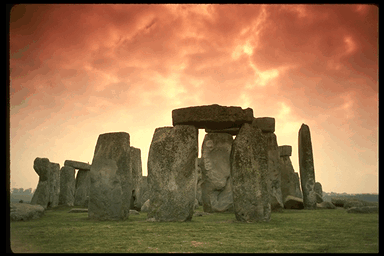
The megalithic ruin known as Stonehenge stands on the open downland of Salisbury Plain two miles
(three kilometres) west of the town of Amesbury, Wiltshire, in Southern England. It is not a single
structure but consists of a series of earth, timber, and stone structures which were revised and
re-modelled over a period of more than 2000 years. In the 1940s and 1950s, Richard Atkinson proposed
that construction occurred in three phases, which he labelled Stonehenge I, II, IIIa, IIIb, and IIIc.
The sequence of building in the third phase, however, cannot be clearly established.
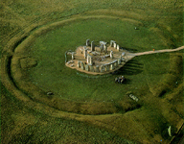
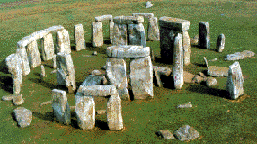

Stonehenge I (3100-2300 BCE)
The earliest portion of the complex, which dates to approximately 3100-2300 BCE., comprised a circular
bank-and-ditch of about 330 feet (100 metres) in diameter. Just inside the earth bank is a circle of the
56 Aubrey holes (now invisible on the surface). Probably also dating to this time are the four
Station Stones (only two of which survive) and, on the north-east side, an earthwork which runs
from the break in the bank-and-ditch. The now-fallen Slaughter Stone, located at the break in the
bank-and-ditch, may date from this period, as may also the Heel Stone, located further out along
the Avenue.
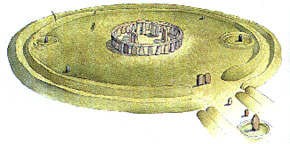
Stonehenge IIIa (2100-2000 BCE>
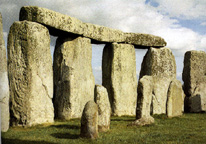
Part of the outer circle of sarsens (added around 2100-2000 BCE). In front of them are
stones of the bluestone circle (added around 1550-1100 BCE)
Around 2100-2000 BCE, in the centre of the original circular bank-and-ditch, ten upright stones arranged
as five freestanding pairs with a single lintel (the so-called trilithons) were placed in the shape
of a horseshoe. The trilithons were then enclosed within a circle of about 108 feet (33 metres) in diameter
comprised originally of 30 neatly trimmed upright sandstone blocks (known today as sarsens). These
stones, which stand on average 13 feet (4 metres) above the ground, are about 6.5 feet (2 metres) wide,
and 3 feet (1 metre) thick, supported a continuous ring of sarsen lintels (held in place by
tongue-and-groove joints).
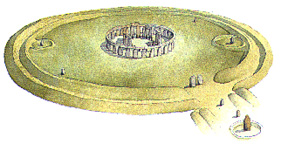
Stonehenge IIIb (2000-1550 BCE)
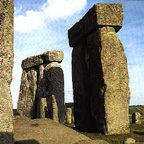
Two of the trilithons (added around 2100-2000 BCE).
In front of them can be seen two of the upright bluestones which formed a
circle inside the horseshoe of trilithons (added around 2000-1550 BCE)
Around 2000-1550 BCE, a horseshoe of smaller upright igneous stones without lintels (the bluestones)
were brought from the Presceli Mountains in Wales and placed inside the horseshoe of trilithons.

Stonehenge IIIc (1550-1100 BCE)
Finally, around 1550-1100 BCE, a circle of smaller upright bluestones was added between the outer
sarsen circle and the trilithons. Also added around this time were two concentric circles of holes -
the so-called 'Y' and 'Z' holes - outside the circle of sarsens.
Back
Creative Design Works by KDB © Copyright 1998








